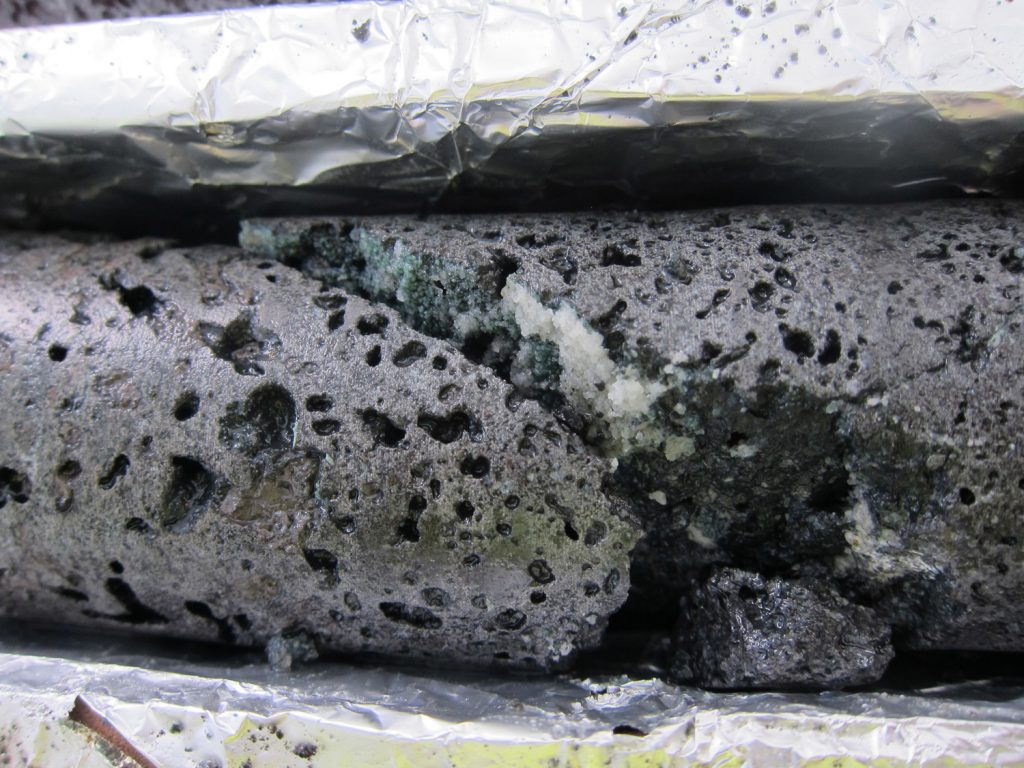CarbFix project in Iceland successfully turns carbon emissions into rock
The intriguing CarbFix project has successfully proven the concept of permanently store carbon dioxide as minerals in basaltic rocks at the project site at the Hellisheidi geothermal power plant in Iceland.
In Science Magazine published recently, the Icelandic-international CarbFix project publishes initial results on its demonstration “that it is possible to permanently store carbon dioxide as minerals in basaltic rocks and that over 95% of CO2 injected is mineralized within two years, instead of centuries or millennia as previously thought. ”
The project at the Hellisheidi geothermal power plant near Reykjavik, Iceland pumps carbon emissions back into the earth. According to the findings, the carbon dioxide reacted with other chemicals in the rocks and changed chemically to a solid within months — radically faster than anyone had predicted. A study describing the method appears this week in the leading journal Science.
Edda Aradottir, who heads the project for Reykjavik Energy, initially estimated the solidification process might take 8 to 12 years. “Then, it happened much faster. It was a very welcome surprise,” she said.
Cores drilled from the injected area show the rock is heavily laced with whitish carbonate veins, apparently produced by the process. Under a pilot project called Carbfix, started in 2012, the plant began mixing the gases with the water pumped from below and reinjecting the solution into the volcanic basalt below. In nature, when basalt is exposed to carbon dioxide and water, a series of natural chemical reactions takes place, and the carbon precipitates out into a whitish, chalky mineral.
But no one knew how fast this might happen if the process were harnessed for carbon storage. Previous studies have estimated that in most rocks, it would take hundreds or even thousands of years. In the basalt below Hellisheidi, 95 percent of the injected carbon was solidified within less than two years.
“This means that we can pump down large amounts of CO2 and store it in a very safe way over a very short period of time,” said study coauthor, Martin Stute, a hydrologist at Columbia University’s Lamont-Doherty Earth Observatory. “In the future, we could think of using this for power plants in places where there’s a lot of basalt — and there are many such places.” Basically all the world’s seafloors are made of the porous, blackish rock, as are about 10 percent of continental rocks.
Sigurdur Gislason, a University of Iceland geologist and study coauthor, said geothermal companies around the world have shown interest in the technology. But, he said, its greatest promise would be with fossil-fuel-powered plants, smelters and other heavy industries that produce far more emissions. The main stumbling block beyond the needed basalt, he said, is the water required — about 25 tons for every ton of CO2. But, he said, in many places seawater could be used.
The Hellisheidi operation has an advantage in that it largely uses the plant’s existing infrastructure to reinject the solution, and doesn’t bother purifying the CO2. Its cost is only $30 a ton, said Aradottir.
Scientists have been tussling for years with the idea of so-called carbon capture and sequestration. But up to now, projects have made little progress. It has been tried at only a handful of sites, and most experiments have involved pumping pure carbon dioxide into sandstone, or deep, salty aquifers. But scientists are worried that any miscalculation could result in emissions making their way back up through fractures, or that natural earthquakes or tremors caused by the injection itself could rupture subterranean reservoirs.
The abstract for the paper in Science Magazine:
Carbon capture and storage (CCS) provides a solution towards decarbonization of the global economy. The success of this solution depends on the ability to safely and permanently store CO2. This study demonstrates for the first time the permanent disposal of CO2 as environmentally benign carbonate minerals in basaltic rocks. We find that over 95% of the CO2 injected into the CarbFix site in Iceland was mineralized to carbonate minerals in less than two years. This result contrasts with the common view that the immobilization of CO2 as carbonate minerals within geologic reservoirs takes several hundreds to thousands of years. Our results, therefore, demonstrate that the safe long-term storage of anthropogenic CO2 emissions through mineralization can be far faster than previously postulated.
CarbFix is a collaborative project between Reykjavik Energy, the University of Iceland, CNRS in Toulouse and Columbia University. Juerg Matter is the lead author of the paper. Other contributing authors are Martin Stute, Sandra Ó. Snæbjörnsdottir, Eric H. Oelkers, Sigurdur R. Gislason, Edda S. Aradottir, Bergur Sigfusson, Ingvi Gunnarsson, Holmfridur Sigurdardottir, Einar Gunnlaugsson, Gudni Axelsson, Helgi A. Alfredsson, Domenik Wolff-Boenisch, Kiflom Mesfin, Diana Fernandez de la Reguera Taya, Jennifer Hall, Knud Dideriksen and Wallace S. Broecker.
The CarbFix project can be found online here.
Source: Times of India


















